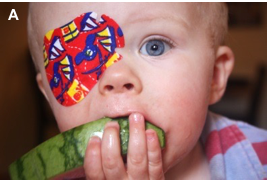
The Surgical Approach to Strabismus Correction
Surgery may be a daunting approach to correcting strabismus for some. It is a relatively common procedure, however. The surgery entails recalibration of the ill operating ocular muscle in order to create balance and restore alignment of the deviated eye. The procedure historically yields a 50% success rate, thus requiring patients to undergo multiple corrective procedures.
But not all strabismus is created equally and is immediately considered for surgery. There are different types of strabismus and not all require surgery as a first line therapy, in fact, most do not. Moreover, many parents are coerced into surgical intervention in fear that their child will go ‘’blind.’’This is often misunderstood information as strabismus is not a cause of blindness, however it has a high chance of affecting binocular vision development thus limiting depth perception in patients who are not treated.
Aside from scare tactics another high yield decision for surgical repair is cosmetic appearance.
Strabismus corrective surgery is an outpatient procedure that usually lasts between 30minutes to 2 hours per the American Academy of Ophthalmology (AAO). Children require general anesthesia for the procedure whereas adults may undergo correction under general or local anesthesia.
This procedure may not be for the squeamish, as adjustable sutures may be used and adjusted a few hours after the procedure, during recovery. The surgeon will reevaluate the patient and if needed adjust the sutures accordingly. But prior to said adjustment, anesthetizing eye drops are used to decrease discomfort. Our friends as Massachusetts Eye and Ear note on their website ‘’… patients can sometimes feel anxiety, pressure or minor discomfort while the sutures are repositioned. “

Although never expected, some complications may arise and are listed below from the AAO website, not to mention the odds of needing to undergo the procedure more than once.
- Sore eyes
- Redness
- Residual misalignment
- Double vision
- Infection
- Bleeding
- Corneal abrasion
- Decreased vision
- Retinal detachment
- Anesthesia-related complications

Aside from the procedure, recovery and potential complications another factor to consider is the cost of surgery. Working with your insurance company you are likely to expect bills for surgeon fees, anesthesiologist fees, as well as facility and miscellaneous fees as well. These fees occur for every procedure performed, even the repeat corrections. View the table for same cost outlines, but again these costs vary from country to country as well as with personal health insurance coverage. (In UK currency)




Pingback: Treatments for Amblyopia | PinpointEyes